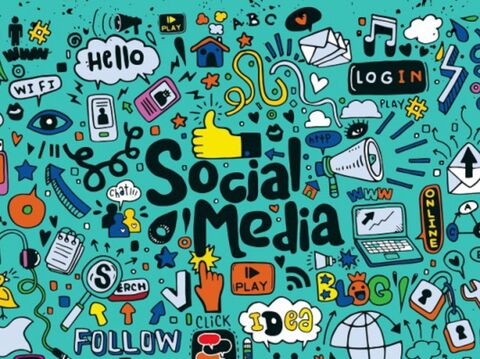How B2B Companies Build Their Brand Name!

B2B companies are constantly seeking ways to enhance their brand identity and increase market share. According to research by MarketingProfs, 80% of B2B companies agree that brand awareness is a vital factor in boosting business growth.
B2B organisations need to adopt functional brand growth techniques to remain competitive and relevant in their industry. Developing a solid brand identity is the bedrock of any effective B2B marketing strategy.
This involves defining the brand and generating a clear message for the target audience. At GrowthJockey, we ensure that once your brand identity is developed, it can focus on building brand awareness through various channels. In this article, we will look at the key brand growth techniques of strong B2B companies.
The essence of Brand Building
A brand is the sum of elements that companies use to differentiate themselves in the market and capture the target audience’s attention. This combination consists of not only visual assets such as website logos, design, business cards, or brand colours.
It has more to do with your company’s tone of voice, values, mission, vision, and more. If anything in your business contributes to painting a picture of how clients perceive your firm, it is most likely an aspect of your brand.
A brand can also mean a term, name, symbol, design, or other feature that identifies a specific seller’s service or product and differentiates it from the competition. B2B branding applies the same principles as a specific brand, but the target audience is different.
The focus for B2B branding is on creating a solid brand that identifies with other businesses and not individual consumers. Brand growth for international companies requires credibility, trust, and expertise within a particular sector or industry.
It also requires offering a concise value proposition and solutions to business problems. B2B companies aiming to achieve brand growth in business need to draft a global brand strategy that places them beyond the possibilities of their local audience.
It involves designing a brand that is appealing and relevant to clients across diverse cultures, markets, and languages. For brands to achieve optimum performance, they need to have a deep understanding of the specific audience and also tailor and adapt their message to each particular market.
How to Build your B2B Brand Name
The following steps are essential techniques for building a strong B2B brand name:
1. Recognising your Audience

When building your B2B brand, it is essential to identify who you are targeting. Companies should consider the kind of products they will be selling and who they will serve in terms of specific customers.
For instance, rather than targeting “cat owners,” a pet accessory company can specialise in new cat owners or individuals who train cats for shows. Selecting a particular niche means your business has less competition to worry about.
Recognizing your audience aids in giving you a brand design, voice, and the proper growth strategy to relate with potential customers. Firms can increase their knowledge of their audience by:
-
Observing the competition: What type of customers are competing companies targeting? Are there specific underserved aspects of the market you can aid with your products?
-
Analysing existing consumers: Have you reached existing buyers, and what is your knowledge about them? What is the age range, what do they like about your service, or where are they from?
-
Developing buyer personas: Envision what your desired customer might appear like. Then draft a profile highlighting their gender, age, likes, demographics, dislikes, and behaviours (like purchasing behaviours).
As B2B brands continue to create their presence, they will have better opportunities to grasp customer surveys and analytics tools.
2. Establish your Brand’s Position
A deep understanding of your target audience helps establish a clear brand positioning. An easy way to achieve this is to create a positioning statement.
This is less than three lines that you can utilise to aid in establishing your brand and what it does. It also involves how you can differentiate it from others.
Once you have identified your selling points and position, you can create branded content and market campaigns. This should speak to your audience in the right tone of voice.
3. Choose your Business Name
At this point, you should have figured out your specific audience and how you want to station your brand. Now, it is time to select that unique and resonating brand name. This is among the most defining attributes that GrowthJockey incorporates into your brand.
The proper name should summarise everything your clients should know about you in a single phrase or word. The aim is to pick a memorable name with memorable sounds and portray precise ideas or emotions to your audience.
Some types of names are:
-
Emotive names - These names inspire emotional replies and reactions. E.g.. CraveMate.
-
Descriptive names - these types of titles describe businesses, like “BakerPal”.
-
Compound names - these names combine words, e.g., Snapchat.
-
Origin names - these names are chosen in recognition of the founders or the location it started. E.g., Ford
-
Acronyms and Initials - they are easily memorable versions of lengthier names such as BMW.
To reach worldwide brand growth, you should research available domain names before selecting your choice name.
4. Draft your Brand Story
Your B2B brand story is fundamentally the reason behind your company. Every business should have a motivation and purpose beyond profit making.
You should think of the reasons you established your business and how your services or products can impact individuals’ lives. A great story prompts customers to love your business and respect your brand.
5. Design your Brand’s Appearance

Developing your brand’s appearance means deciding how you are going to help customers recognise your company from afar. For example, how will your clients recognize your package when an ordered delivery arrives?
What type of packaging will you be using for your goods? What will the customers see as they navigate your apps and website searching for your products?
Some important aspects of your brand’s look should include;
-
Fonts - your selected fonts can create a significant impact on the way your customers visualise your brand. Sans-serif fonts often appear more friendly and modern, while serif appears more authoritative and traditional.
-
Brand colours - Your brand colour choices should include a collection of shades you will use on your branded assets. These include your emails, websites, and product packages. Colours have been discovered to leave a psychological effect on customers, such as red signifying passion and boldness.
-
Imagery - What images, pictures, and illustrations will you put on your website, products, and advertisement?
After selecting the diverse elements needed to build your image, set up visual guides to better inform your designers and other creative team members.
6. Create a Slogan
Captivating slogans comprise one of the growth trends of brand growth in B2B companies in recent times. It may be optional, but it is worth implementing to boost your brand’s recognition and reach.
Slogans help your customers comprehend what your company is and what it offers. The type of slogan you should use depends on the goal your brand aims to achieve. For instance, Nike’s “Just do it” slogan showcases its motivational culture to global customers.
The right slogan will inform your audience about what they need to know as far as your brand is concerned. It also gives your business a unique touch for an added effect. When using a slogan, always use voice tones and captions that make you stand out.
7. Design your Logo
Your brand’s logo is a major factor in establishing your brand name. It serves as the first point of contact between your customers and your services.
The right logo should be comprehensive enough and meaningful. Some types of logos you could consider include; brand emblems, letter marks, mascot logos, and icons. Other types include combination marks and wordmarks.
Employing the help of professionals like GrowthJockey enables you to give your brand the visibility it deserves.
8. Incorporate your Brand All Over
An effective brand growth strategy is incomplete unless you share your presence for the world to see. As a business, you need to showcase your brand in all you do to make it memorable. The best way to implement this is to build a style guide for your contractors and team members.
Ensure that they all know how your brand should sound and look. You should also strategize on how to solidify your presence both online and offline.
This is why GrowthJockey offers business services that enable you to place your brand in front of your target audience.
Summing up
A solid brand name is essential for the growth of any B2B brand in the business world today. Using the proper branding techniques, businesses can connect with potential clients and enable them to understand their value.
At GrowthJockey, our unwavering dedication lies in creating custom solutions that effectively tackle the crucial challenges confronted by our clients across diverse industries, ultimately leading to brand growth. Regardless of the size of your company, whether a small-scale enterprise or a large corporation, you can now leverage the advantages of our cutting-edge solutions to fuel your brand growth.
Take the decisive step towards unlocking the next level of growth for your brand by contacting us today and discovering how our tailored strategies can drive brand growth for your business.








